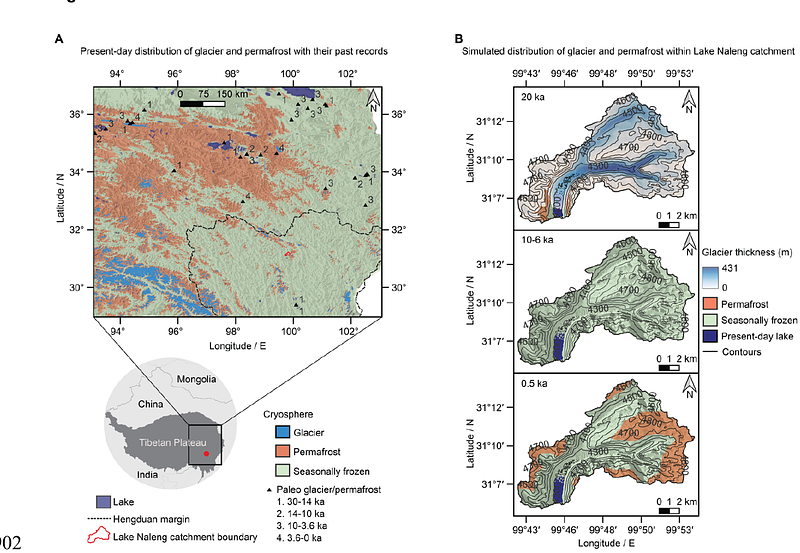Tibetan terrestrial and aquatic ecosystems collapsed with cryosphere loss inferred from sedimentary ancient metagenomics

Tibetan terrestrial and aquatic ecosystems collapsed with cryosphere loss inferred from sedimentary ancient metagenomics
Liu, S.; Stoof-Leichsenring, K.; Harms, L.; Schulte, L.; Mischke, S.; Kruse, S.; Zhang, C.; Herzschuh, U.
AbstractGlacier and permafrost shrinkage and land-use intensification threaten diverse mountain wildlife and affect nature conservation strategy. Our understanding of alpine ecological dynamics is, however, insufficient because time series portraying ecosystem complexity adequately are missing. Here, we present an ancient metagenomic record tracing 317 terrestrial and aquatic taxa, including mammals, fish, plants, and microorganisms retrieved from a lake sediment core from the southeastern Tibetan Plateau covering the last 18,000 years. We infer that steppe-meadow turned into woodland at 14 ka (cal BP) controlled by warming-induced cryosphere loss, further driving a change of herbivore dominance from wild yak to deer. Network analyses reveal that root hemiparasitic and cushion plants are keystone taxa, likely altering the terrestrial ecosystem via facilitation. These findings refute the hypothesis of top-down control by large herbivores in the alpine ecosystem. We also find that glacier mass loss significantly contributes to considerable turnover in the aquatic community at 14 ka, transitioning from glacier-related (blue-green) algae to abundant non-glacier-preferring picocyanobacteria, macrophytes, fish, and fish-eating otters. Human impact contributes little to shaping the alpine ecosystems. By applying network analysis, we provide the first sedaDNA-based assessment of the stress-gradient hypothesis. As cryosphere loss is ongoing due to climate warming, prioritizing the protection of habitats with rich nurse plants that aid neighbors in adapting to stressful conditions is likely to be a more beneficial conservation measure than livestock reduction in the Tibetan Plateau.